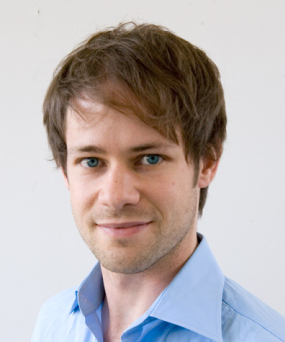- Homepage
- Programme
- Registration
- Practical Guide
- About Neuronus

Max Planck & UCL, UK

Quentin Huys is professor of Computational Psychiatry in the Division of Psychiatry and the Institute of Neurology at University College London. He is also the deputy director of the Max Planck UCL Centre for Computational Psychiatry and Ageing Research and a consultant psychiatrist with Camden and Islington NHS Foundation Trust. Quentin did his undergraduate at Gonville and Caius College, Cambridge University, followed by a MB/PhD at UCL Medical School and the Gatsby Computational Neuroscience Unit with Peter Dayan. After postdoctoral research at the Center for Theoretical Neuroscience at Columbia University, he undertook his psychiatry residency at the Hospital of Psychiatry in Zurich and was as a senior research fellow at the Translational Neuromodeling Unit, which is part of both ETH Zürich and the University of Zürich.
In his work, prof. Huys focuses on developing computational tools for clinical applications in psychiatry. His team’s latest contributions include identifying the interference between Pavlovian and instrumental control as a predisposition to risky alcohol use in young adulthood, and describing how clinical symptom reduction in patients with borderline personality disorder can be predicted by the BOLD signal in the amygdala. Their research relies on bridging the fields of psychiatry, neuroscience, machine learning and statistics and utilizes tools such as fMRI, EEG, cognitive tasks, and computational modeling.
As a Deputy Editor of the Biological Psychiatry: Cognitive Neuroscience and Neuroimaging, prof. Huys also leads the journal’s Computational Psychiatry series where he offers commentaries on novel methodological aspects in the field as well as current and potential best practices.
Emotions promote our well-being in survival-salient situations. They are triggered by biologically relevant signals such as threats and physical harm or rewards including food consumption or social interaction. Yet, also abstract and “simulated” pleasures and threats such as love stories, misfortunes, and tragedies shown in films can trigger powerful emotions in the viewers. In my talk I present an overview on brain mechanisms supporting human emotions and show how we can use cinema for simulating real life for studying the emotional brain. I present data from our laboratory showing how viewing emotions in films makes individuals to “tune in” with each other, and how specific neurotransmitter systems in the brain govern out vicarious experience of the emotions we see in movies. Finally, I discuss the origins of our captivation for strong, sometimes also distressing and unpleasant, emotional movies. I propose that we are drawn to affective cinema because it provides a safe simulation environment for preparing to meet actual emotional challenges in real life.
What is Computational Psychiatry Good For? Browning M, Paulus M, Huys QJM.Biol Psychiatry. 2023 Apr 15;93(8):658-660. doi: 10.1016/j.biopsych.2022.08.030.
The computational structure of consummatory anhedonia. Hall AF, Browning M, Huys QJM.Trends Cogn Sci. 2024 Feb 28:S1364-6613(24)00006-8. doi: 10.1016/j.tics.2024.01.006.
Amygdala response predicts clinical symptom reduction in patients with borderline personality disorder: A pilot fMRI study. Geurts DEM, Van den Heuvel TJ, Huys QJM, Verkes RJ, Cools R. Front Behav Neurosci. 2022 Aug 30;16:938403.
doi: 10.3389/fnbeh.2022.938403.
The relationship between resting-state functional connectivity, antidepressant discontinuation and depression relapse. Berwian IM, Wenzel JG, Kuehn L, Schnuerer I, Kasper L, Veer IM, Seifritz E, Stephan KE, Walter H, Huys QJM. Sci Rep. 2020 Dec 18;10(1):22346. doi: 10.1038/s41598-020-79170-9.
Dissociating neural learning signals in human sign- and goal-trackers. Schad DJ, Rapp MA, Garbusow M, Nebe S, Sebold M, Obst E, Sommer C, Deserno L, Rabovsky M, Friedel E, Romanczuk-Seiferth N, Wittchen HU, Zimmermann US, Walter H, Sterzer P, Smolka MN, Schlagenhauf F, Heinz A, Dayan P, Huys QJM.Nat Hum Behav. 2020 Feb;4(2):201-214. doi: 10.1038/s41562-019-0765-5.